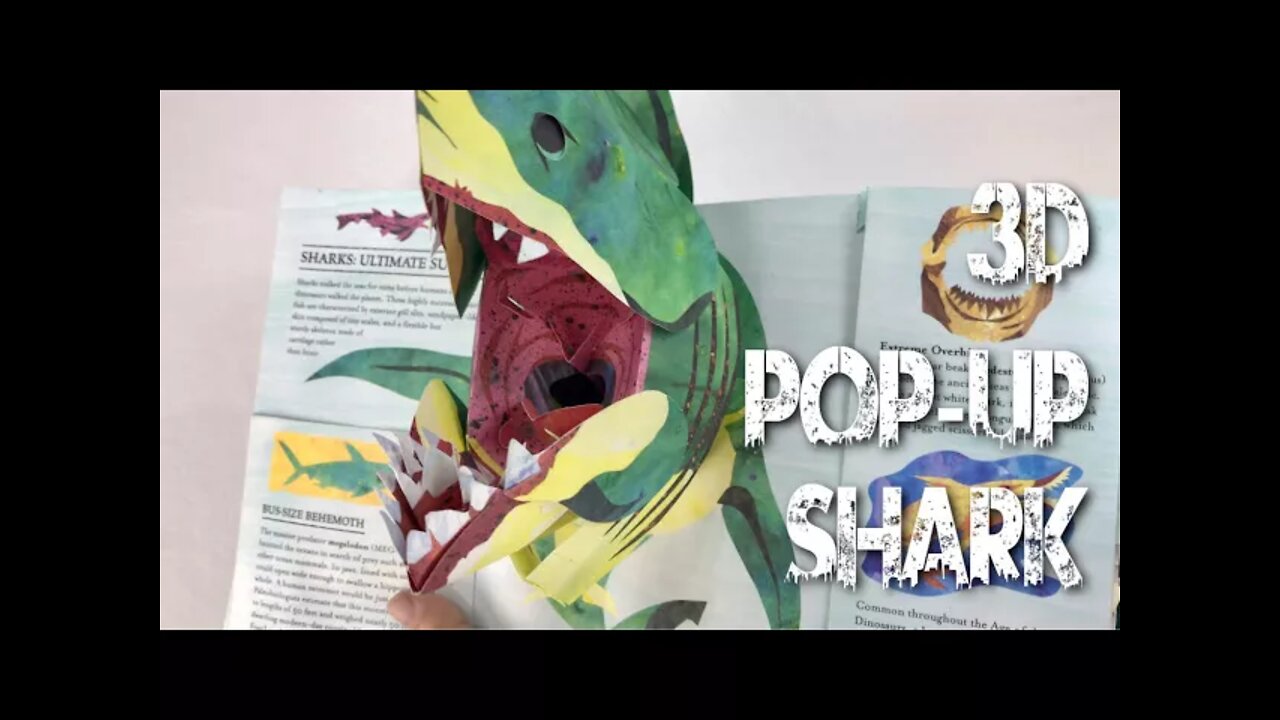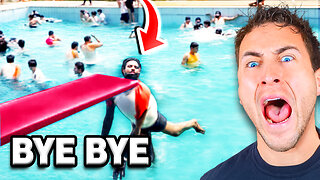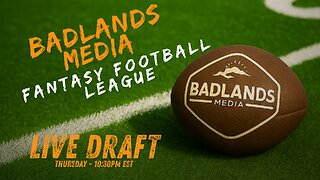Premium Only Content

SHARKS & SEA MONSTERS 3D Pop-Up Book Review
Get it on Amazon here... http://geni.us/1S7oZr
Join this channel to help me bring you more vids...
https://www.youtube.com/channel/UCS-ix9RRO7OJdspbgaGOFiA/join
Join the free von Panda group here... https://panda-research-institute.mn.co
Get Peter von Panda gear here... https://petervonpanda.storenvy.com/
Instagram... https://www.instagram.com/petervonpanda/
As an Amazon Associate I earn from qualifying purchases.
Encyclopedia Prehistorica: Sharks and Other Sea Monsters Hardcover – April 11, 2006
by Robert Sabuda (Author), Matthew Reinhart
Just when you thought it was safe to go back in the water! Celebrate the New York Times best-selling 3-D look at prehistoric creatures of the deep.
While dinosaurs patrolled the lands, massive prehistoric sharks, giant scorpions, and colossal squid cruised the ancient oceans — most with just one thing in mind: eat or be eaten. Pop-up masters Robert Sabuda and Matthew Reinhart explore the prehistoric underwater world where monsters like megalodon ruled the waves. Full of captivating facts and more than thirty-five breathtaking pop-ups, this incredible volume is sure to astonish and amaze everyone from budding marine biologists to confirmed landlubbers.
From renowned pop-up masters Robert Sabuda and Matthew Reinhart comes an awe-inspiring tribute to the world's most beloved extinct animals and their 180-million-year reign on our planet.
Robert Sabuda and Matthew Reinhart offer a mythic look at the mysteries of the past with an entire pantheon of remarkable pop-ups.
From a pop-up master, Robert Sabuda, and an acclaimed poet and author, Michael J. Rosen, comes a glorious celebration of the true spirit of Chanukah.
Hope and joy radiate from the pages of Robert Sabuda’s pop-up book celebrating the Nativity.
Editorial Reviews
From School Library Journal
Grade 1-5–This companion to Encyclopedia Prehistorica: Dinosaurs (Candlewick, 2005) uses equally amazing pop-up illustrations to introduce a fascinating array of ancient sea creatures. From the creepy-crawly invertebrates of the Paleozoic Era to the toothy reptiles of the Mesozoic to the mammoth mammals of the Cenozoic, the enjoyably chatty text offers brief sketches of the changing environment and its inhabitants. The colorful spreads feature large, often breathtaking paper-engineered renderings of prehistoric species, supplemented by smaller, booklike foldouts that provide additional information along with more visual fireworks. Readers will meet a feisty pterygotus (a lobster look-alike that grew to seven feet), an eight-ton sarcosuchus (a crocodilian with a horrendous overbite, and…nearly 100 teeth, some the size of railroad spikes!), and a massive megalodon (a shark ancestor with jaws that could open wide enough to swallow a hippopotamus whole). Spectacular effects include a three-dimensional kronosaurus skeleton with intricately sculpted vertebrae, tinted plastic inserts that evoke murky underwater scenes, and an action-packed, pop-up battle between two long-necked behemoths. There is not much detail here, but the authors do include amusing tidbits about outlandish fossil hunters and references to legendary monsters (Kraken, giant sea snakes, etc). Fun from cover to cover, this attention-grabbing offering will captivate readers, despite its delicate structure and limited shelf life.–Joy Fleishhacker, School Library Journal
Copyright © Reed Business Information, a division of Reed Elsevier Inc. All rights reserved.
From Booklist
Gr. 1-3. The focus of this second entry in the Encyclopedia Prehistorica series of pop-up informational books, which began with Dinosaurs (2005), is not as narrow as the title suggests. An overview of the Paleozoic, Mesozoic, and Cenozoic eras starts things off, and the lively facts about high-profile predators (a massive megalodon could "swallow a hippopotamus whole") are interspersed with information about not particularly monstrous creatures and sidebars about paleontological research. The pops, however, are the main event. On one spread, a gape-mouthed shark plunges toward unsuspecting readers; on another, frosted plastic mimics the ocean's surface. Gatefolds and inset minibooks expand the capacity of the book's seven spreads. Unfortunately, the paper sculptures occasionally obscure the text or catch on the booklets' pages, the artwork often lacks identifying captions, and some of the creatures are introduced without referencing their proper time period. But even if children find the details difficult to synthesize, the sheer wonder generated by the collaborators' dimensional sleight-of-hand will more than justify purchase. Jennifer Mattson
-
 8:50
8:50
Peter von Panda
1 year agoV-Line Under Desk Safe Has A Cool Lock
1.32K1 -
 10:32
10:32
Nikko Ortiz
1 day agoFunniest Fails Of The Month
50.6K7 -
 1:27:34
1:27:34
TruthStream with Joe and Scott
4 days agoArchitect Richard Gage: 911 truths and more #482
23K6 -
 LIVE
LIVE
Lofi Girl
2 years agoSynthwave Radio 🌌 - beats to chill/game to
162 watching -
 56:48
56:48
The HotSeat
13 hours agoI'm NOT Sorry! Guns Aren’t the Problem—Godless Culture Is
27.5K30 -
 9:43
9:43
The Pascal Show
14 hours ago $0.36 earnedWHOA! Annunciation School Sh**ter Identified... Heartbreaking & Insane
1.7K2 -
 22:42
22:42
Liberty Hangout
9 hours agoCollege Democrats Say Gangs Are GOOD!
73.8K66 -
 2:14:50
2:14:50
Badlands Media
14 hours agoBadlands Media Fantasy Football Live Draft
43.2K -
 2:12:29
2:12:29
Inverted World Live
8 hours agoWe Are Time Travelers | Ep. 100
86.1K13 -
 2:57:09
2:57:09
TimcastIRL
8 hours agoCorporate Press Refuses To Mention Minneapolis Shooter Was Trans | Timcast IRL
192K102